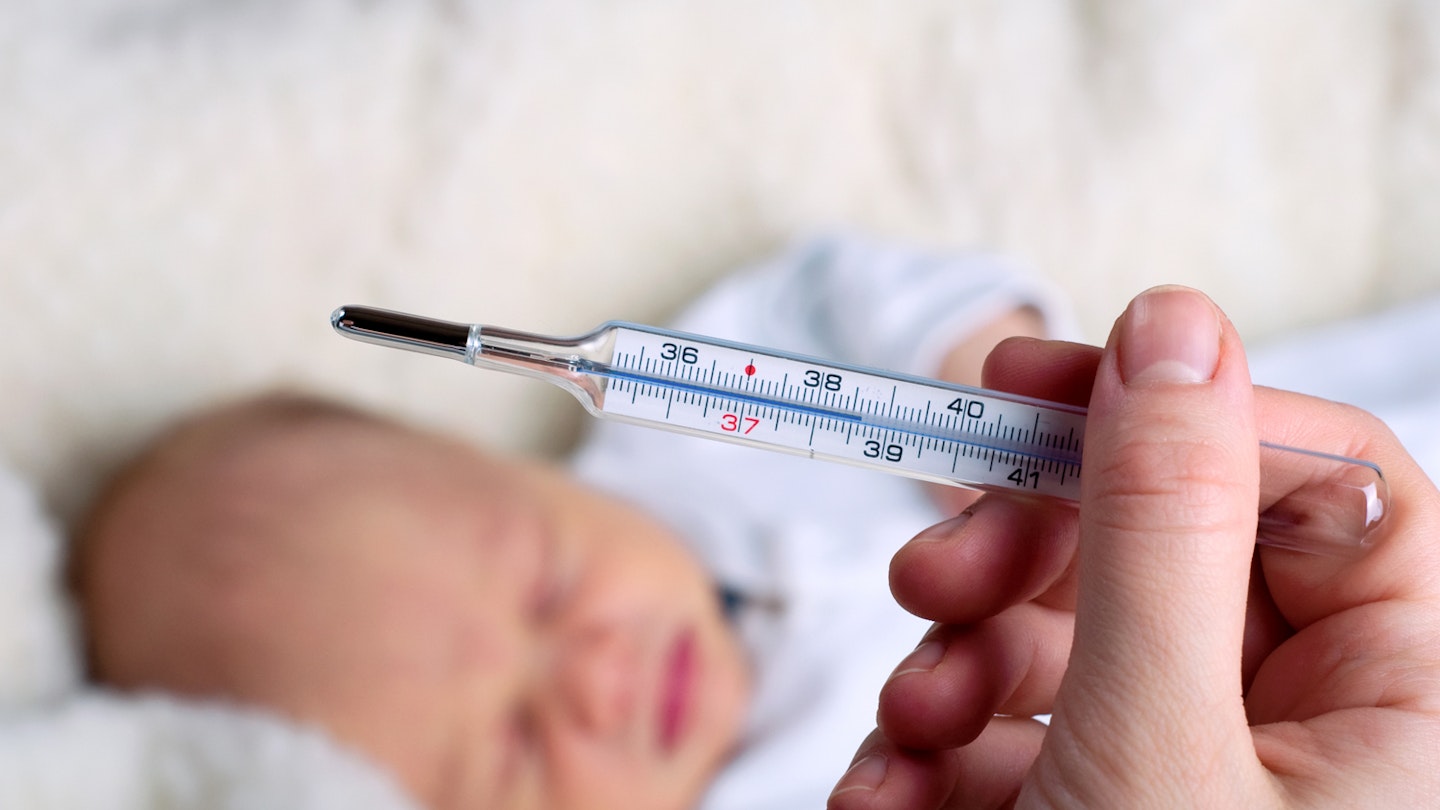Your little one's temperature will fluctuate from time to time, but on certain occasions it may be higher than normal and your baby or toddler may have a fever. This may cause worry, as it's your baby’s defence mechanism when fighting infection. It's therefore important to know what is a normal temperature for your baby and toddler and what is classed as a fever, so you know the steps to take to help them feel more comfortable.
What is a fever in babies?
A normal temperature is 36-37 degrees. Anything above that constitutes a fever. It’s often an indication that baby’s fighting an infection such as a cold, flu, sore throat or ear infection. Immunisations like their 8 week vaccinations can cause your baby’s temperature to spike too, as can teething. It rarely lasts more than a couple of days.
What do fever symptoms look like?
Their brow, chest or back will feel hot to the touch and their cheeks may be flushed and their skin clammy. They may also be tearful and uncomfortable – partly from whatever’s causing the temperature, partly because a fever will make them feel unwell too.
What can you do?
A digital thermometer (available in pharmacies) will give an accurate temperature reading. Simply tuck it under their arm and it beeps when it’s ready to read. Ear thermometers are good but tend to be expensive and strip thermometers are less successful because they read the skin not the body temperature. Whichever thermometer you choose to get, it's an essential for any family medicine cabinet.
Don’t let them overheat – strip them off
If your baby’s over two months you can give them infant paracetamol, over three months and they can have infant ibuprofen. Don’t let them overheat – strip them off to try and reduce the fever naturally. And offer plenty of fluid – regular breast/bottle feeds and cooled boiled water – to stop them dehydrating.
Related: What is RSV in babies?
When to see your GP about fever
If your baby’s under three months and has a temperature of 38 degrees or higher, or under six months and is suffering at more 39 degrees or more, then the NHS advises to see your doctor, as it is unusual for children so young to get a temperature. Similarly, if your feverish baby has an unexplained rash or is particularly sleepy – both can be signs of a more serious problem. If little one’s refused fluid for more than eight hours or drunk less than half their usual amount in 24, it could lead to dehydration.
Very occasionally a high temperature causes a febrile convulsion
Symptoms include sunken fontanelles (the soft spots on their head), dry lips, darker than normal urine and/or fewer wet nappies. Very occasionally a high temperature causes a febrile convulsion. This kind of fit is scary but rarely causes any harm. Most children stop fitting within five minutes. You may want to take them to the doctor or A&E afterwards to get them checked and may even call 999 during it, especially if it’s gone on longer than five minutes or your child’s never had a fit before.
My toddler has a fever but no other symptoms
While your little one feeling hot can immediately cause you to panic, remember it is common and will usually clear up without any treatment. If your toddler feels warmer than usual it could also be down to other environmental factors, such as wearing too many layers, too much bedding, just taking a bath, if they've been running around, or if they've had a vaccination (as their temperature will naturally rise). The best way to determine if your child actually has a fever is to take their temperature using a digital thermometer. Any child over the age of three months with a temperature of 39°C (102°F) or above should be taken to see the GP, or if they are closed call 111.
